Beach photography
Some lessons I learnt from photographing at crowded beaches on the island of Crete: Limits can boost your creativity
Some people restrict street photography at the streets. But I like to think that street photography is more general. I think it has to do with public space and people who give meaning and share stories. The beach is such a public space that people share. Beach is the street where people walk, enjoy the sun and the sea and (sometimes) relax during summer.
The photos you will be seeing in this article are mostly taken in Chania. A great majority of these photos are taken in just two beaches, Nea Chora, and Agioi Apostoloi, where I usually prefer to go on a hot summer day.
These beaches get quite crowded during summertime with locals and tourists. The juxtaposition of all these very different people who meet at the beach to share the sun and the sea, with their families, friends or by their own, can be great material for photography.
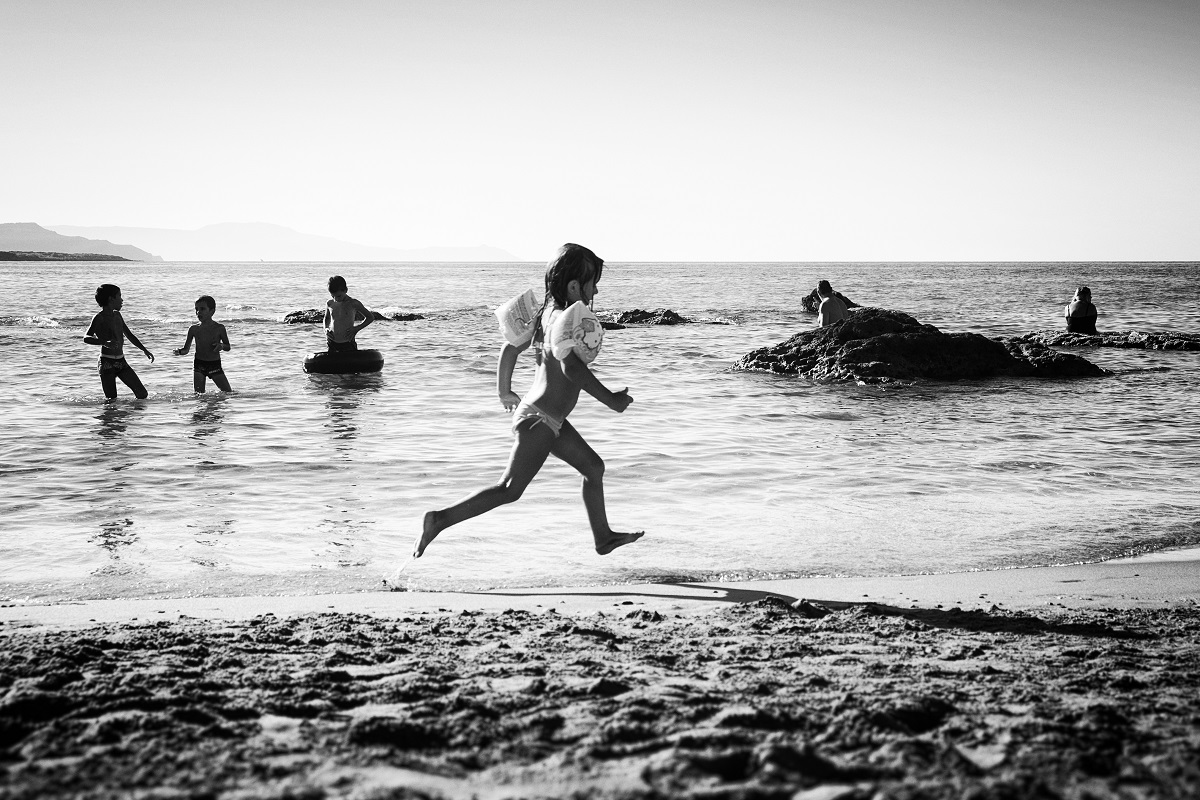
Sometimes it is better to stand still
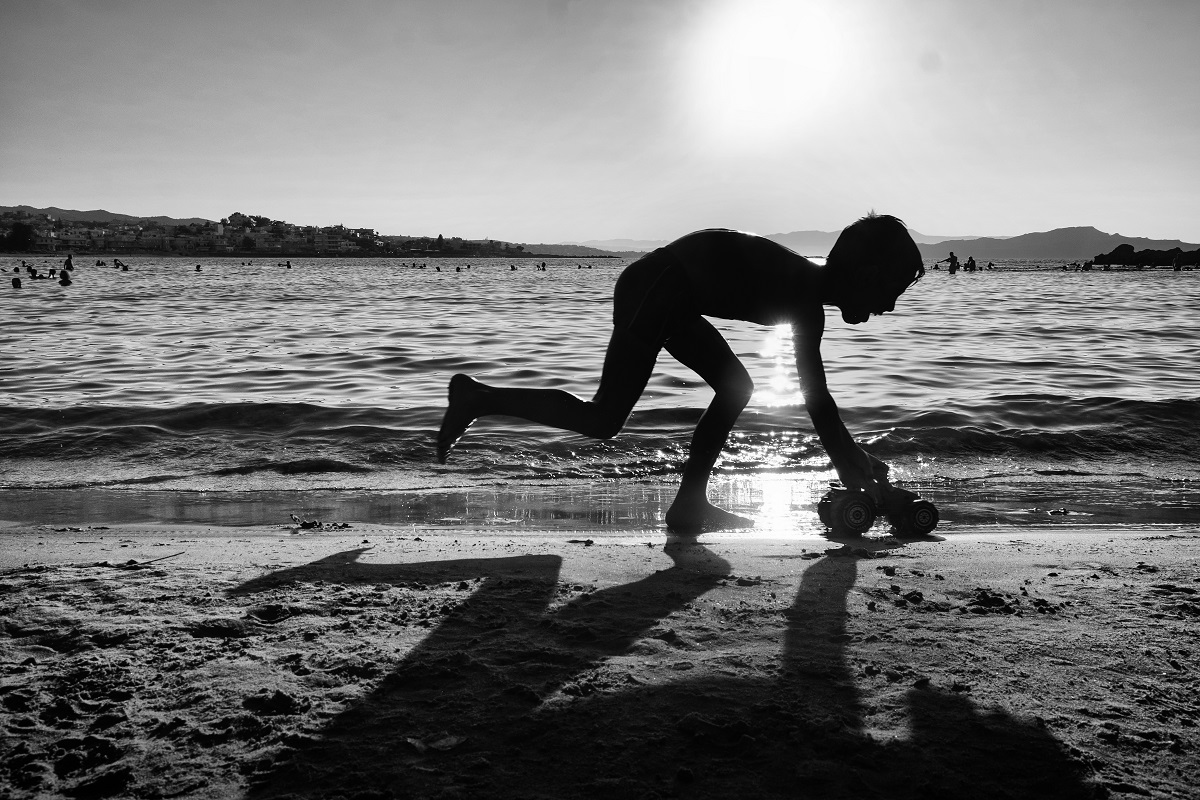
Boy’s game
Use limits to your advantage
Sometimes you need to get out of your comfort zone to take pictures. But other times, knowing the place and feeling comfortable with its surroundings, can be great for photography.
When I know the place I shoot, I know how the light feels at different hours of the day, when the reflections are more beautiful, when the shadows are longer and the silhouettes deeper. I know where to sit and what to look for. I can use all this knowledge to my advantage.
There isn’t only one way to take photos.
Sometimes you need to walk a lot to spot what is of interest. But other times, you need to just stay put.
When I visit Nea Chora and Agioi Apostoloi I usually don’t move a lot. I know where to sit and what to look for. Many times I don’t go to the beach with the sole purpose of taking photos. I just have the camera with me.
Most of these photos were taken from the comfort of my towel. I sit there, observing the movements, trying to avoid attracting any attention to myself. I am a man with his book, his snacks and a camera enjoying his sunbath and taking from time to time some shots.
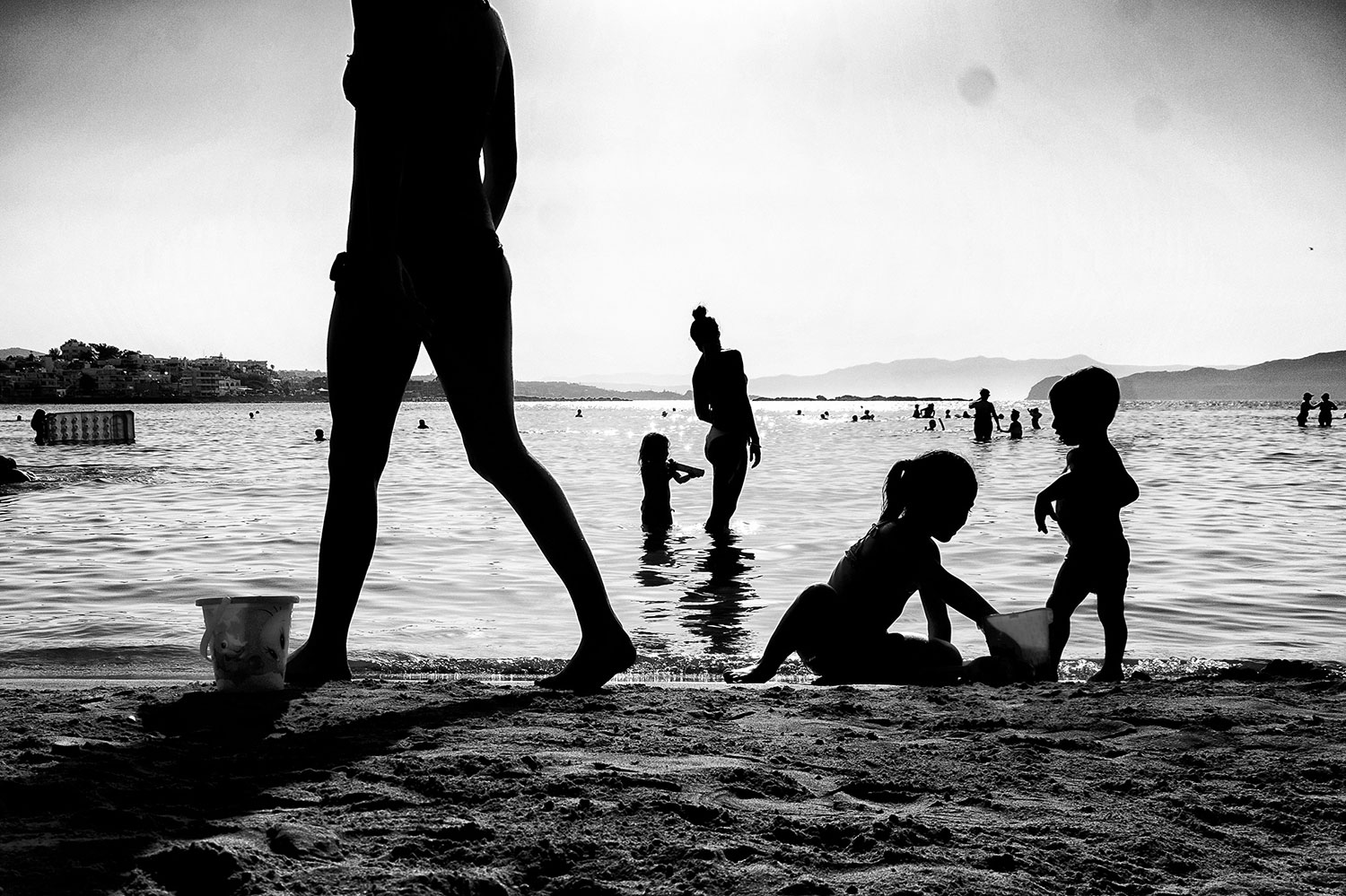
Mom, I will shoot you
For me, street photography is about learning to work with limitations. Limits force you to think and become creative.
Find a great spot to enjoy the sun where there are interesting things happening. Accept that you will not move from that spot, enjoy your time, observe and take photos.
Having said that doesn’t mean that you always have to look at the sea. You might want to look elsewhere, behind or on the side of you. There are things happening around you.
And it doesn’t have to be a towel. You can sit beside an ice cream truck or at any other point that you find interesting. But try to stay there. Try to find a spot you like the scenery and spend some time observing what is happening. Relax and pay attention to what is happening around you. Be patient.
I also like to work with just one lens. The less you have, the more you rely on knowledge, observation and creativity because these are the only things you really can rely to pull this off.
Instead of looking on your bag for the right lens for the occasion, accept that all you have is one lens and start looking how to take the photo you want with the lens you have. The limitation frees your mind and makes you focus on what is really important: taking the photo you want.
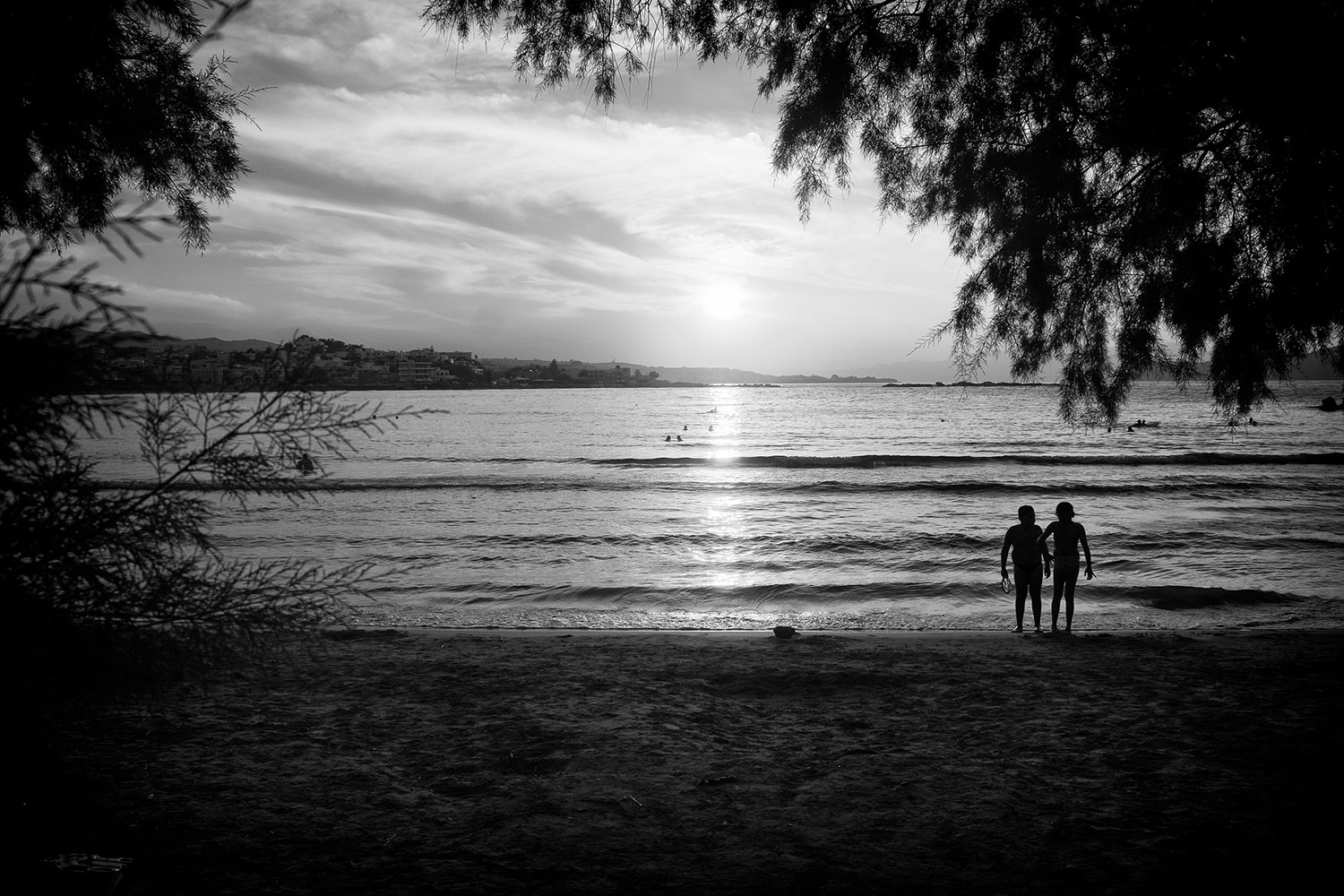
A sunset for children
Appearances can be deceiving
So, limits can be good and less can be more. And then there is size. Small, in most occasions, is good.
In some kinds of photography the less you become noticed the more free you are to take great photos. In others, like wedding, architecture or landscape photography, bigger can be better.
For clients, a big camera and a big long lens might make you look more of a “professional”, even if the piece of the equipment you are holding is really not that great and you are not that much of a professional.
But appearances can be deceiving.
In street or documentary photography you don’t want to look like the professional with the big camera. You just want to pass unnoticed.
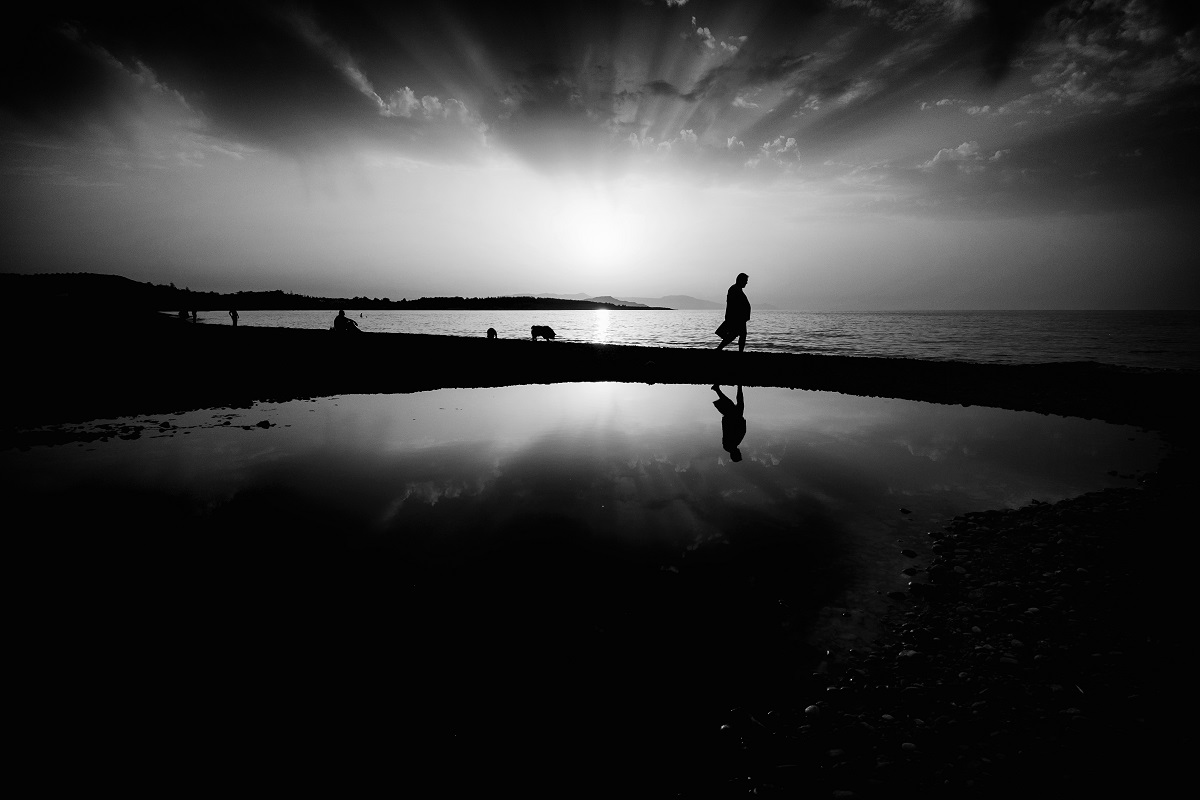
River and sea
For the past years, I am using a Fuji mirrorless system and while it is truly a very professional piece of machinery with great quality lenses, to the eyes of a common observer it just looks like a small beautiful camera, thus a camera a “professional” wouldn’t use. This can be really helpful in situations where you want to pass unnoticed. And in beach photography, a man with a small camera blends with the environment, he is just another tourist taking pictures of a beautiful sunset or of the sea.
That’s what you want; Your appearance to deceive. To pass unnoticed.
Most of the photos I present here were taken with a FUJI X-E1 and a FUJI X-E3 system which I now use. I usually combine my camera with the kit lens (which is quite great) but there can be other combinations that can make your camera look even smaller. I personally like to use the kit lens since it has a bit of a zoom which sometimes I use.
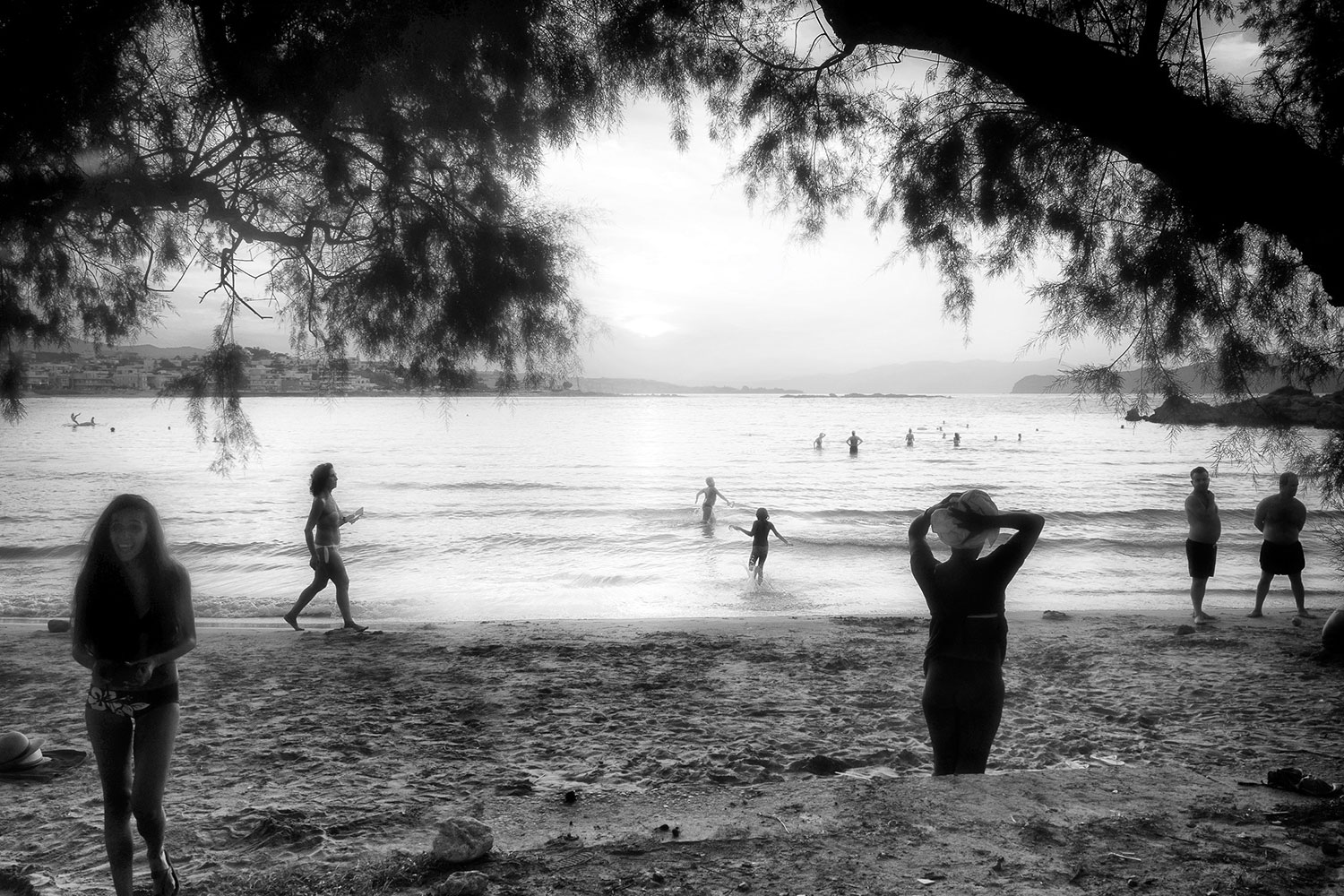
Improvisation
Some more tips about photography at the beach:
– In beaches there is sand and sun and sea water and children running around screaming with sand on their feet and sea water on their bodies. They can get close to you. And it can become dangerous to your precious camera. This is a risk that you will have to live with, if you want to take photos on the beach. But keep a cloth with you to clean your camera!
– Use silhouettes: Beaches are great places to take silhouette photos. But even here you can either choose to be creative or you can take a cliché shot. Try to use silhouettes to tell a story and if you choose to take a cliché shot of people in the sunset, at least try to make it interesting by finding an interest frame.
– Be comfortable with manual mode: I think that especially in beach photography working with manual is quite important because you get to control details such as depth and how light is captured, how deep are the shadows. You can even choose to overexpose to create a specific atmosphere. Using manual effective helps at the creative process since you can come closer to the idea of an image you have on your mind.
– Photograph at different hours: It is different to take photos on midday and quite different on sunset. Not only the conditions change but many times the people that you find on the beach, the way they react, what they choose to do.
– Wear sunglasses (or not?): Some photographers say that wearing sunglasses is useful because you draw less attention and you avoid eye contact. Personally, I don’t like wearing sunglasses because I feel I don’t see clearly what I am taking a photo off and that annoys me.
– Don’t get too stressed if you don’t find anything of interest. Remember, to be relaxed. If you don’t find anything of interest just enjoy your time at the beach. For me, it seems that when I release myself from the pressure of finding something interesting, when I enjoy myself, it comes naturally that I can find points of interest. However, it always helps to have an idea of what you would like to take photos of, either it is people’s silhouettes or long shadows or particular vivid characters at the beach. If you have a general idea of what you want to take a photo, you can organize your actions.
– If you find something that particularly interests you, take as many pictures as you can. Usually, for me, it is the first pictures I take which I like the most but sometimes it happens that through experimentation you can find different angles to approach a subject and discover new territory.
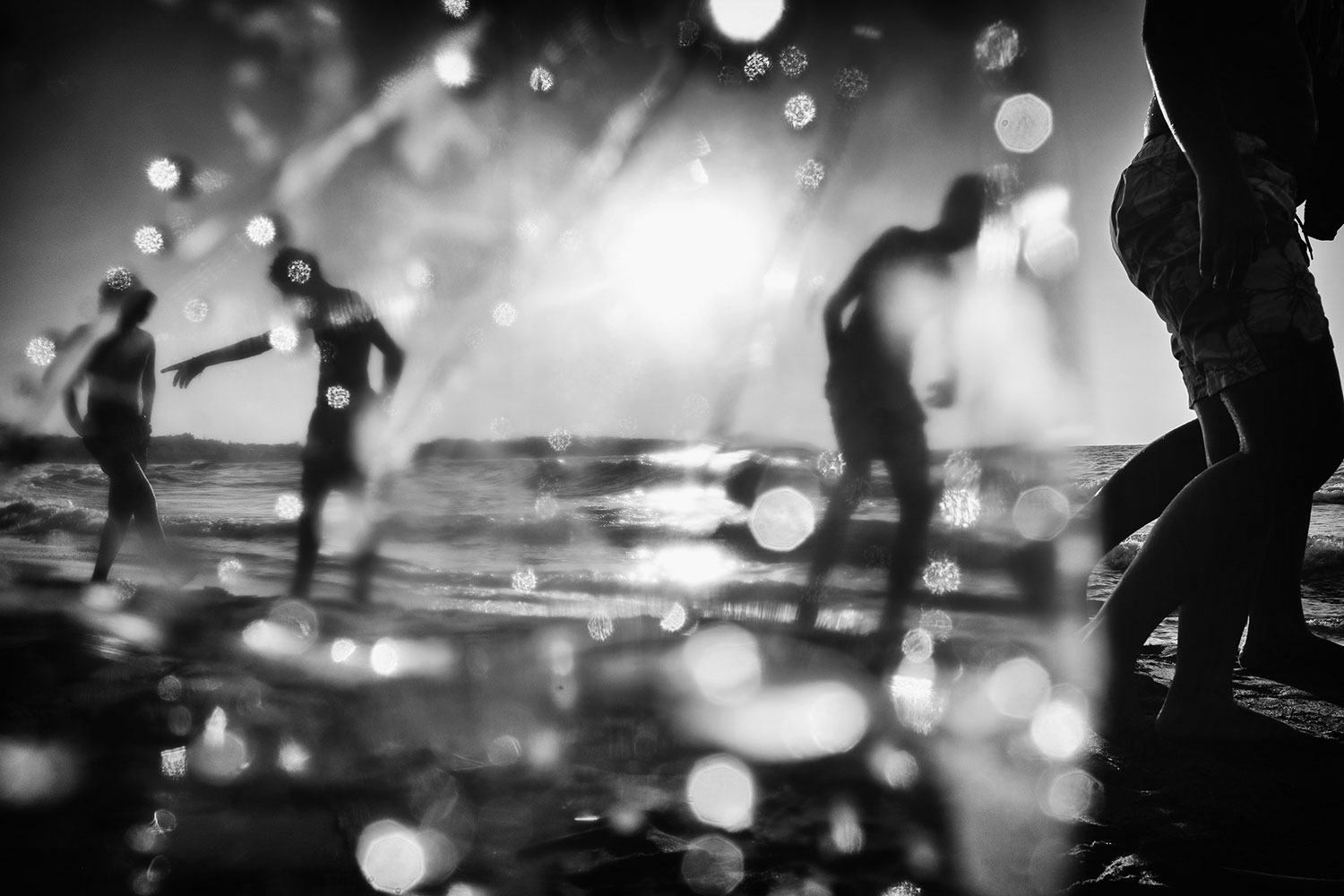
Searching for the lost treasure
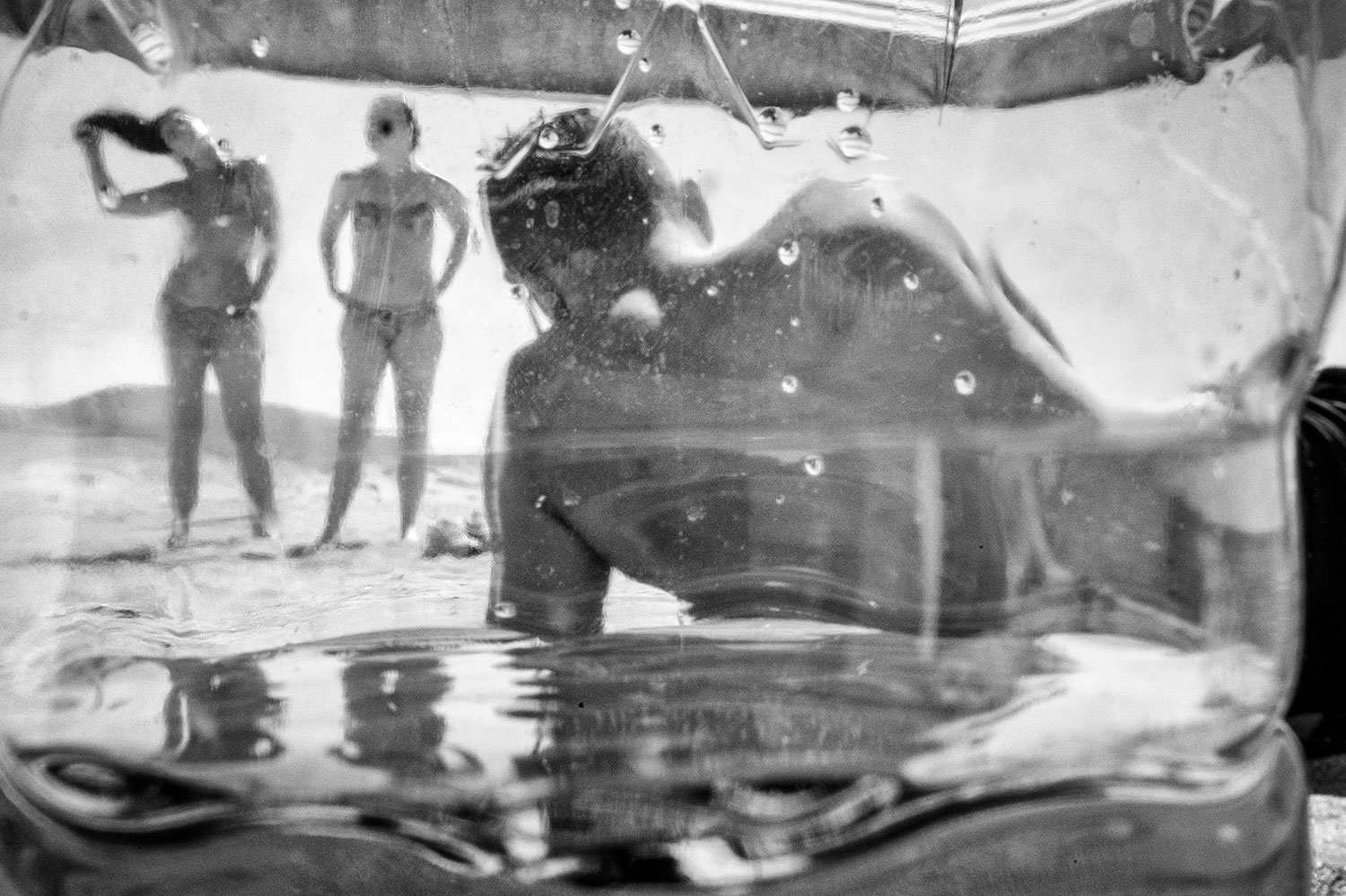
Girls brushing their hair
Settings on my camera
Many of the shots here were taken with an aperture between F8 and F10 which I think is quite sharp and is something I prefer at my street photography which is based heavily on composition.
ISO is usually around 1000 which is a good amount that produces almost no grain and helps me get my shutter speed higher, up to 1/2000.
The shutter speed used was usually 1/1000 but I also use 1/2000, depending on the time of the day. I want to be able to freeze the moment and take as many shots of the moment as it happens so I can then choose the one I prefer.
I also prefer spot metering because this way I can decide where to put the focus concerning lights, shadows and silhouettes. Therefore, I can decide to meter a face and make the background overexposed or focus on a light source in order to emphasize shadows and silhouettes.
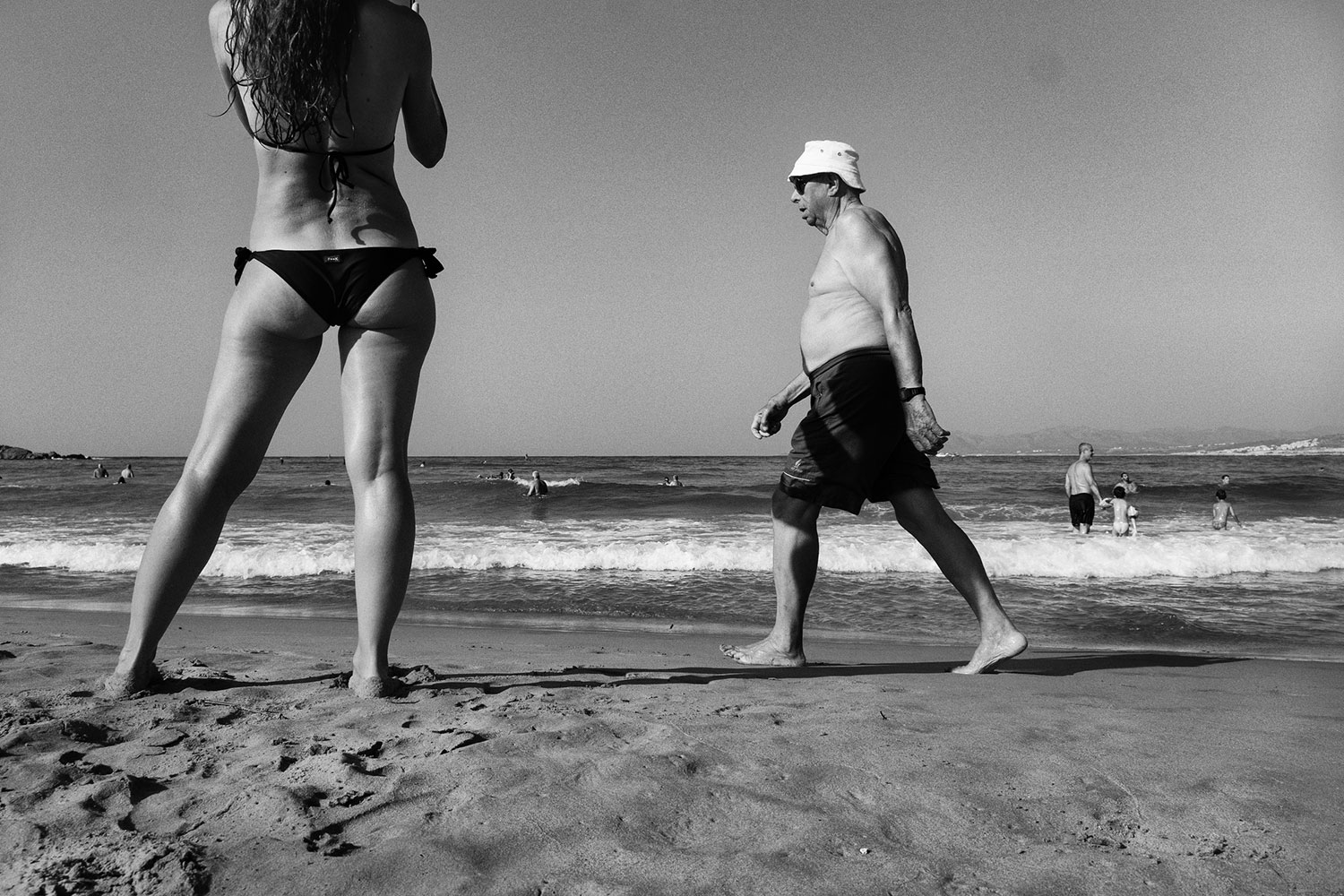
Old and young
All these of course are settings that are mostly connected to the style of photography I present here and could be quite different in other styles of street photography at the beach, like when you want to capture characters or a scene with many people.
It all has to do with what you want to take a photo of. And the photo you are taking is not only the subject you want to photograph but how you use the subject that you are taking a photo of to capture what you have on your mind as the end result. Many of these photos could have a very different feeling with different settings on my camera. The decision I made with my settings had to do with what I wanted the end result to be.
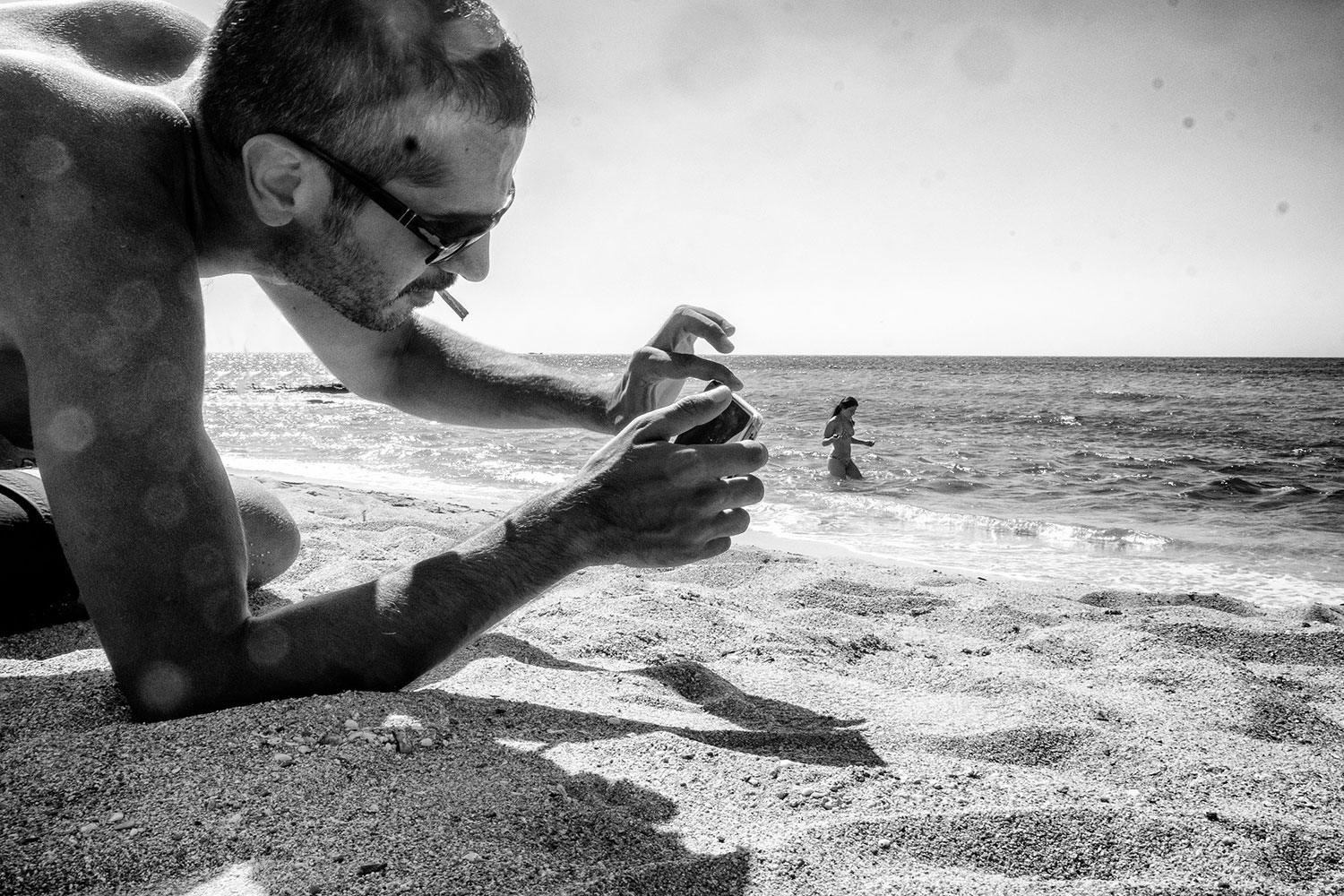
The giant and the girl
Post-processing
As for the post-processing, I personally use Adobe Lightroom for the basic corrections and Adobe Photoshop for the black and white conversion.
Since I like high contrast photos, If my photos are not as high contrast as I want when I see them on my computer I try to selectively affect shadows or increase contrast so as to reach to the result I find pleasing to my eye. So some photos have been more processed with an emphasis on contrast and shadows and different layers at the black and white conversion process, but others are almost as they were taken from the camera with a simple black and white conversion and a bit of sharpening.
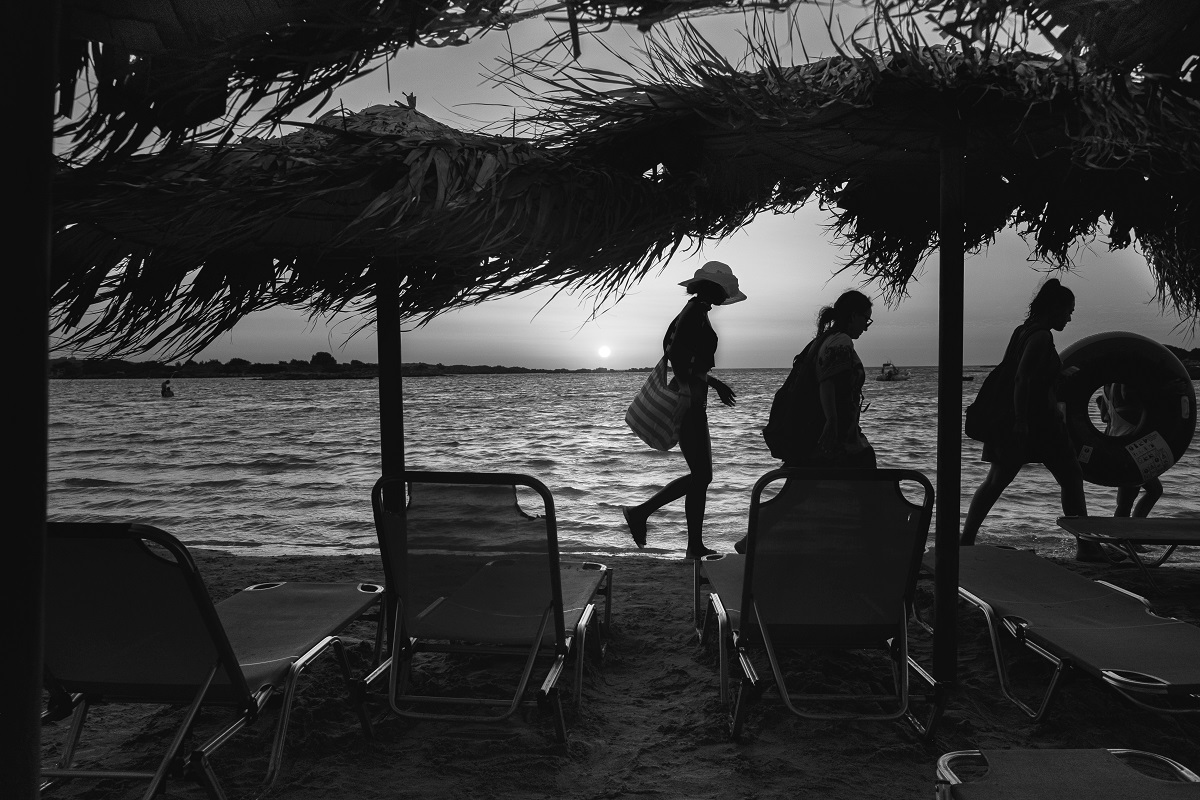
End of a summer day
Some end thoughts before you start shooting
If I could summarize my experience from taking photos on the beach, it all adds up to those elements which make me feel comfortable taking photos, like knowing the beach and feeling like I am one of the people I am photographing, having a small camera which helps me get unnoticed and elements that might be seen as limiting but in reality they are pushing me to use all my knowledge of the place, my observation and creativity to achieve good photographic results.
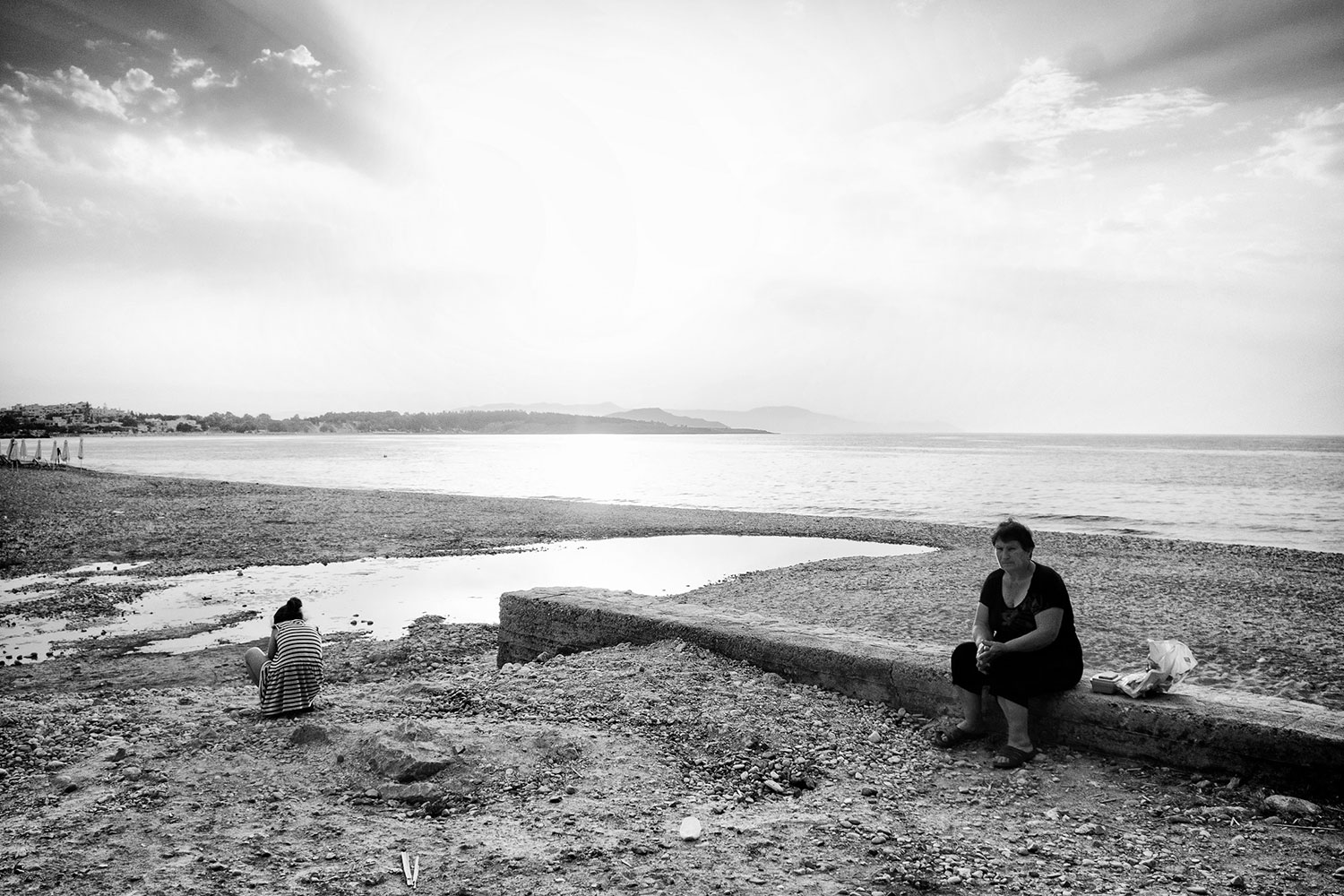
The thinking grandmother
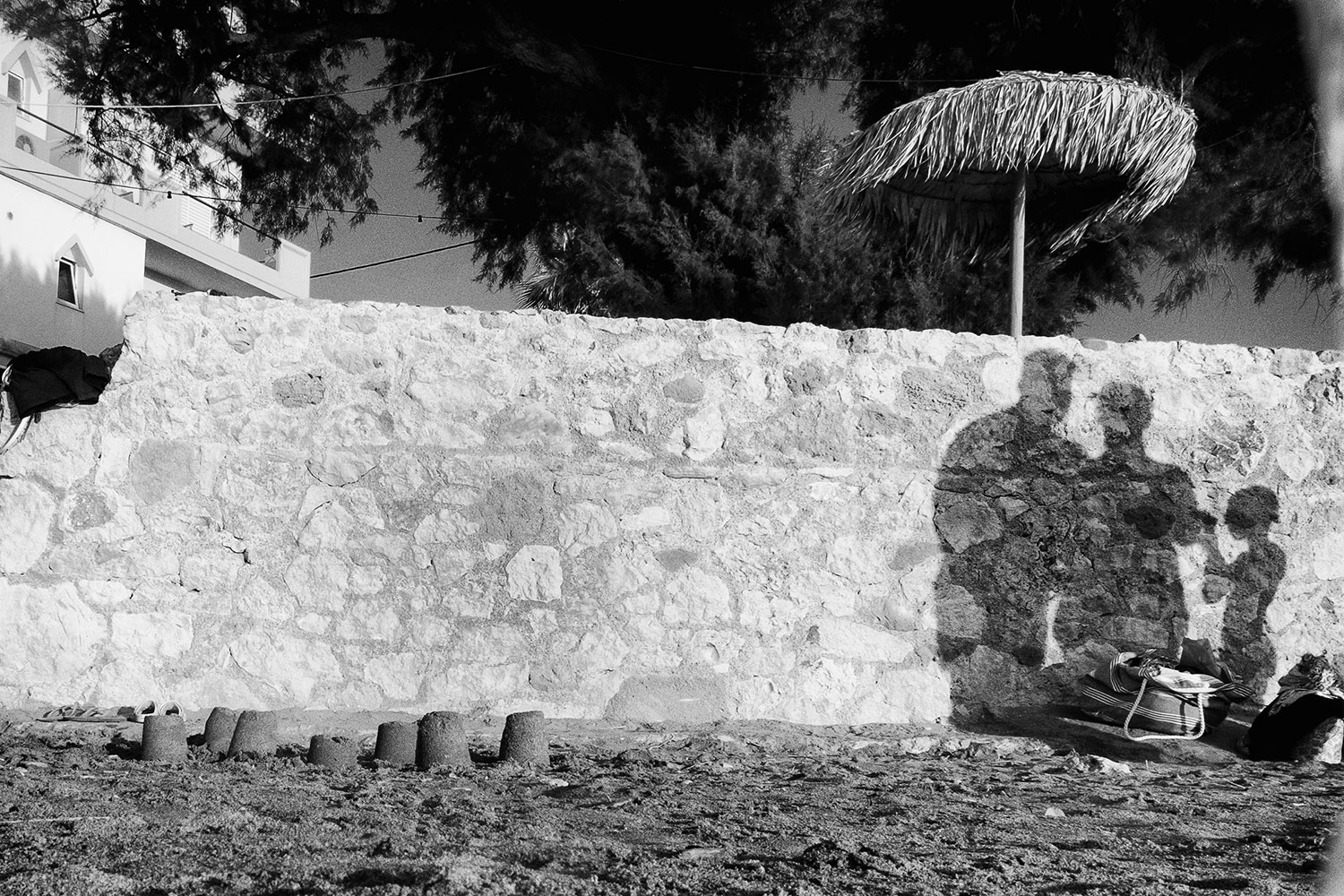
The family
It also helps to have an idea of the end result you want to achieve. Somehow, many times it seems to me like I am directing a scene that I don’t know the scenario, with actors that do not know that they are taking part in my “film”. I know what I want, I know how and where to set the camera to get what I want, I know where to wait and I just have to wait for it to happen. I know that it can happen but if it doesn’t happen, that’s ok. I can still enjoy a nice swim in the sea.
This, of course, is not a general or a conclusive guideline, just the way I am doing beach photography right now. Others (depending on the mood, myself including) might enjoy taking long walks on the beach and capturing the feeling that the people give. Or finding interesting characters to take portraits of them. It’s all good. Just be confident and take great shots. People are much more relaxed on the beaches. And there is still time till Summer ends! (at least in Greece ;-))
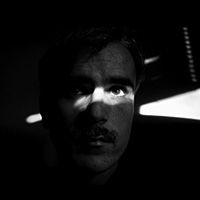
Giannis Angelakis
Photographs are fleeting moments that are kept for the purpose of telling stories. As a street photographer, I try to capture these moments as they happen. I did a degree of Cultural and Media Studies at the University of Wolverhampton (BSc) and studied at the Centre for Contemporary Cultural Studies and Sociology at the University of Birmingham (MPhil), a subject which I think is connected with my interest in human stories. Now, at the age of 39, I am trying to incorporate elements of street photography with a focus on the human subject on everyday news coverage.
I am an owner of FUJIFILM X-E3 which I am using up to the point of exhaustion. As in writing all my effort is put to develop my own personal style at telling a story with photography.

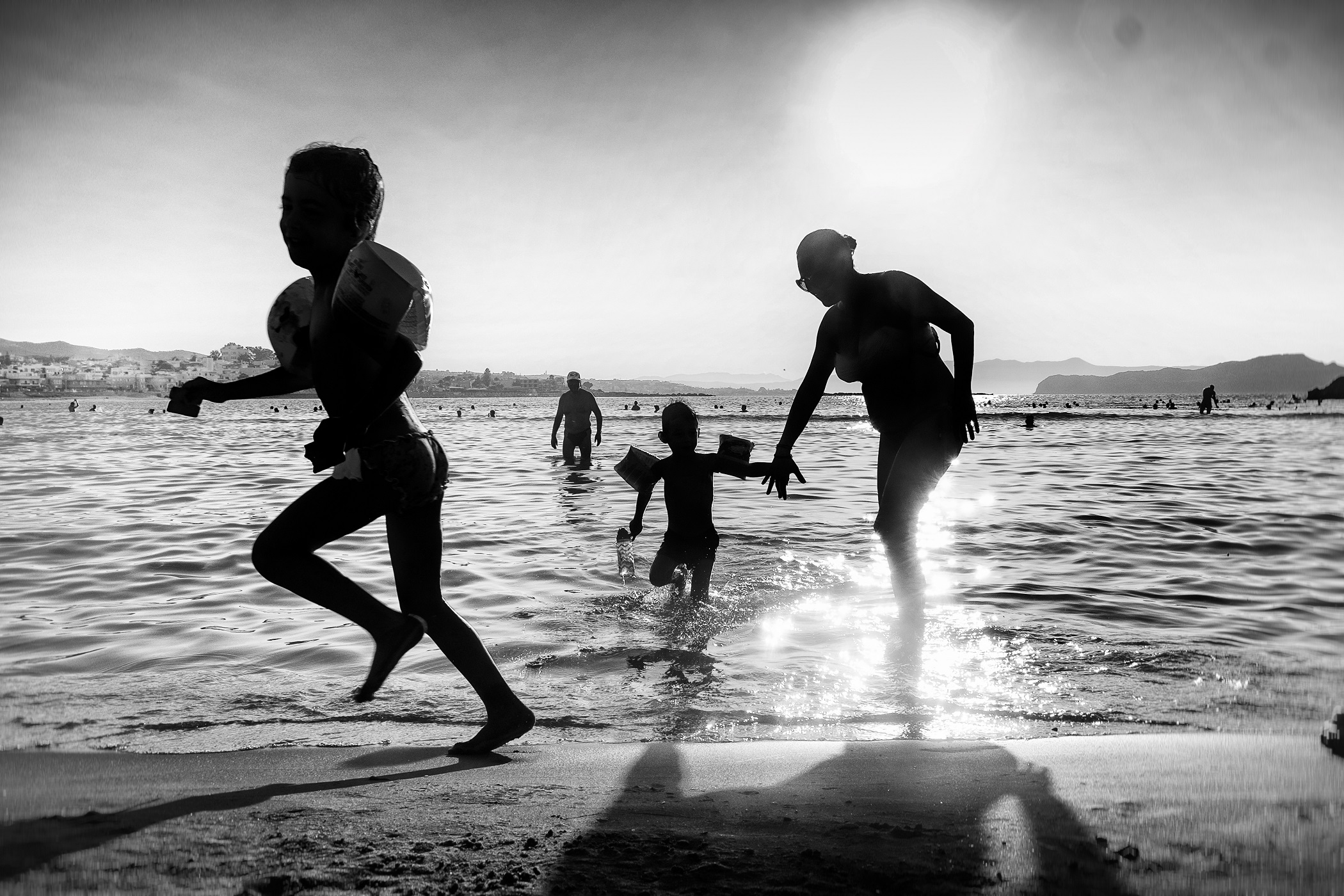

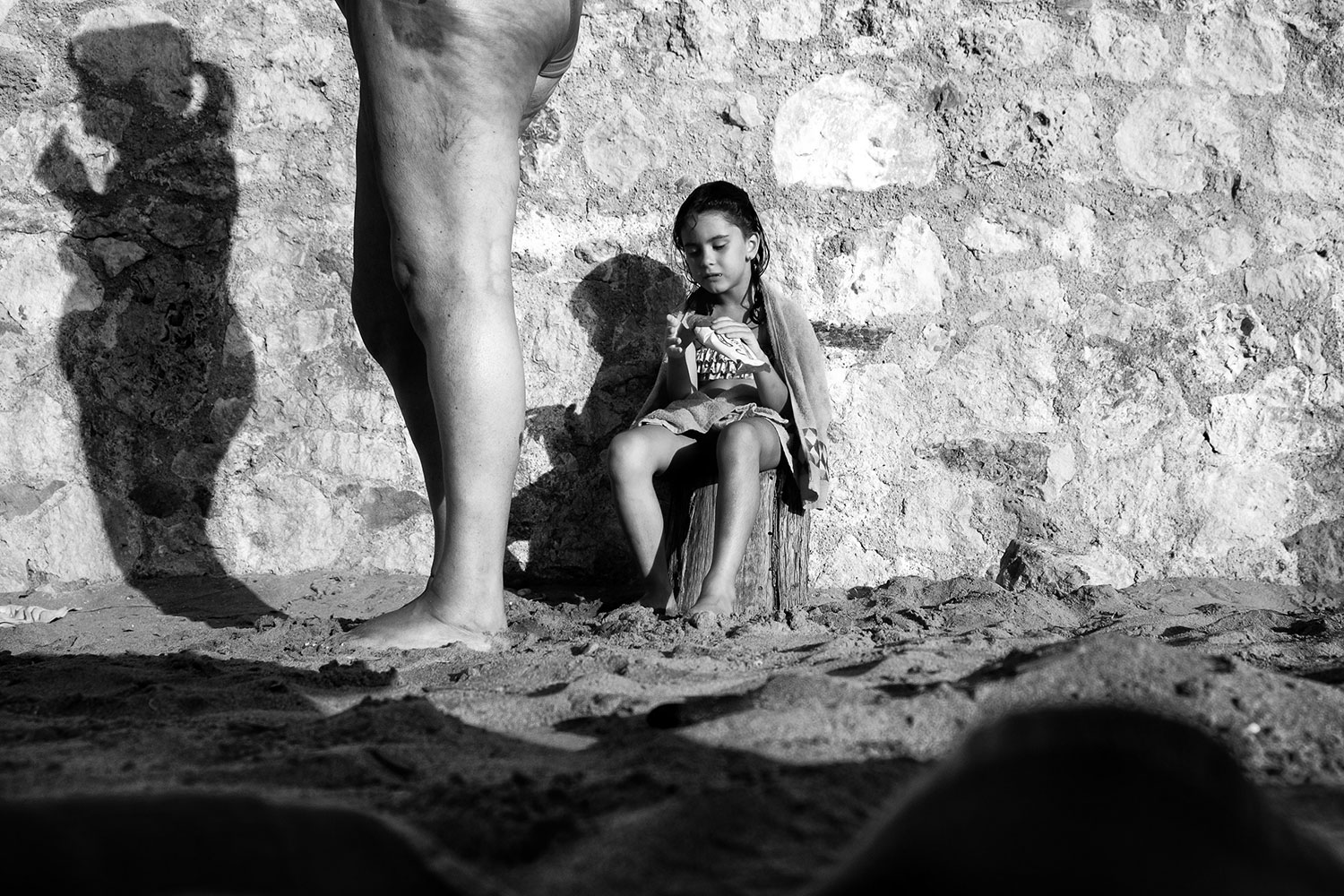



Fabrizio Gandini
July 17, 2020 @ 10:12 am
Very interesting article, and great photos of course. Congratulations.
Anders
July 28, 2020 @ 9:47 am
You have some great photos here, but I find it kind of disturbing that the moral issues around photographing children at the beach without getting noticed gets no mention at all in your article.
It may be perfectly legal to do in your country, and I’m not accusing you of lying around in the bushes with a 500mm, but all the talk about deception and going unnoticed just gives me a bad feeling.